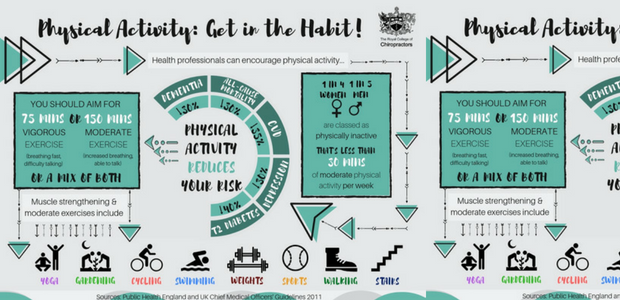The Impact Of Posture On Pain In The Back: Methods For Sustaining Appropriate Alignment Throughout Daily Activities
The Impact Of Posture On Pain In The Back: Methods For Sustaining Appropriate Alignment Throughout Daily Activities
Blog Article
Personnel Author-Salisbury Fox
Maintaining proper posture isn't just about sitting up right; it has to do with straightening your body in such a way that sustains your back and lowers the risk of back pain. The means you rest, stand, and move throughout the day can dramatically impact your spine health. Yet just how exactly can you ensure good positioning constantly, even throughout busy days loaded with various activities? Let's dive deeper into the subtle yet impactful adjustments you can make to your day-to-day regimen to keep your back pleased and healthy and balanced.
Value of Correct Stance
Proper stance is important in keeping a healthy and balanced back and avoiding pain. When you rest or stand with good pose, your back remains in positioning, lowering pressure on your muscle mass, ligaments, and joints. This positioning permits the body to disperse weight evenly, protecting against too much stress on specific areas that can result in pain and pain. By keeping view lined up, you can likewise boost your breathing and food digestion, as slouching can press body organs and restrict their capability.
In addition, keeping good stance can boost your total appearance and positive self-image. When you stand tall with your shoulders back and head held high, you emanate self-confidence and appear even more friendly. Excellent posture can also make you feel extra invigorated and sharp, as it promotes correct blood circulation and allows your muscle mass to work efficiently.
Incorporating appropriate pose into your daily regimen, whether sitting at a desk, walking, or exercising, is crucial for preventing neck and back pain and promoting total well-being. Remember, a tiny modification in just how you hold yourself can make a considerable difference in just how you really feel and work throughout the day.
Common Postural Mistakes
When it concerns maintaining excellent posture, numerous individuals unknowingly make typical errors that can add to back pain and discomfort. Among one of the most common mistakes is slumping over or stooping over while sitting or standing. how to help back pain on the spine and can bring about muscle mass imbalances and pain in the future.
One more usual error is overarching the reduced back, which can squash the natural contour of the back and create pain. Furthermore, going across legs while resting may really feel comfy, yet it can create an imbalance in the hips and hips, causing postural concerns.
Using a cushion that's too soft or as well firm while resting can also impact your placement and contribute to pain in the back. Last but not least, constantly craning your neck to take a look at displays or adjusting your position often can stress the neck and shoulders. Bearing in mind these usual postural blunders can aid you maintain better alignment and lower the risk of neck and back pain.
Tips for Correcting Placement
To improve your placement and minimize pain in the back, it's essential to concentrate on making small modifications throughout your everyday routine. Begin by bearing in mind your stance. When resting, guarantee your feet are flat on the flooring, your back is straight, and your shoulders are loosened up. Stay clear of slouching or leaning to one side. Usage ergonomic chairs or pillows to support your lower back.
When standing, distribute your weight equally on both feet, keep your knees a little curved, and tuck in your hips. Engage your core muscles to support your spine. Take breaks to extend and walk around if you have a less active work. Integrate workouts that reinforce your core and back muscles, such as slabs or bridges.
While resting, use a pillow that supports the natural contour of your neck to maintain correct spinal positioning. Prevent sleeping on your belly, as it can strain your neck and back. By being mindful of these tips and making small modifications, you can gradually correct your placement and reduce neck and back pain.
Conclusion
Bear in mind, maintaining good stance is essential to stop pain in the back and promoting spinal health and wellness. By bearing in mind your placement, distributing weight equally, and involving your core muscle mass, you can minimize pressure on your back and minimize the risk of discomfort and injury. Incorporate ergonomic support, take regular breaks to stretch, and strengthen your core and back muscle mass to maintain appropriate placement throughout the day. Your back will thanks for it!
